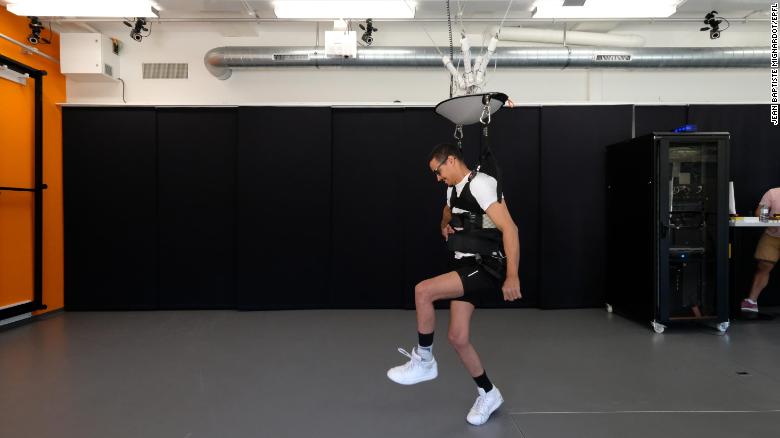A man with a spinal cord injury leaving him wheelchair bound has been able to walk thanks to a revolutionary new spinal implant.
Two other men involved in the study were also able to regain control of their leg muscles after they were implanted with electrical stimulators that could help compensate for the damage to their spinal cords, according to new research published in the journal Nature.
The spinal cord carries messages from the brain to other parts of the body, allowing us to move our limbs, feel sensations like pressure or temperature, and control vital functions.
If it is damaged, the neural signals can have trouble getting through, leaving a person paralyzed or otherwise disabled.
In this experiment, researchers at the Swiss Federal Institute of Technology in Lausanne used electrical implants to bridge the gap in the spinal cord, helping to carry the messages from the brain across the damaged area into a non-damaged part of the spinal cord lower down.
The effects of the treatment lasted beyond when the electrical signals stopped, and “all of the participants retained some improvement in muscle movement even after the stimulation therapy,” according to Nature.
While the results were astonishing, the team was quick to caution that the treatment — called epidural electrical stimulation — is in the early stages and it is not clear for how many people this would work.
Importantly, the current sample size was very small, and all involved in the study retained some level of motor function below their injuries, even if this was not enough to walk unaided.
One positive sign about the study is that the electrical stimulation was not simply moving the muscles by itself, in the way that sending current through a dead body will make it twitch, but that it relied on the subjects attempting to move their limbs.
“It really works as an amplifier,” study lead Grégoire Courtine told Nature. “It’s not that we’re taking over control of the leg. The patients — they have to do it.”
He said that after two days, the new movement became almost natural to the subjects and within a week, they were able to walk with limited assistance. This included one person previously had no movement in his legs, and one whose left leg had been completely paralyzed, according to Nature.
READ ALSO: Asamoah Gyan’s wife sings “wish me well” in troubled times [Video]
“Not so long ago, the hope that someone paralyzed for years by a severe spinal-cord injury would ever be able to walk again was just that — hope,” the journal said in an editorial about the new research. “But recent advances are bringing those hopes closer to reality.”
David M’zee, a 30-year-old Swiss man who was told by doctors he would never walk again after a sporting accident, is now able to walk around half a mile with the implant turned on.
“To me, it means a lot. I’m surprised at what we have been able to do. I think you’ve got to try the impossible to make the possible. It’s a -lot of fun — it feels really good,” he told the BBC.

